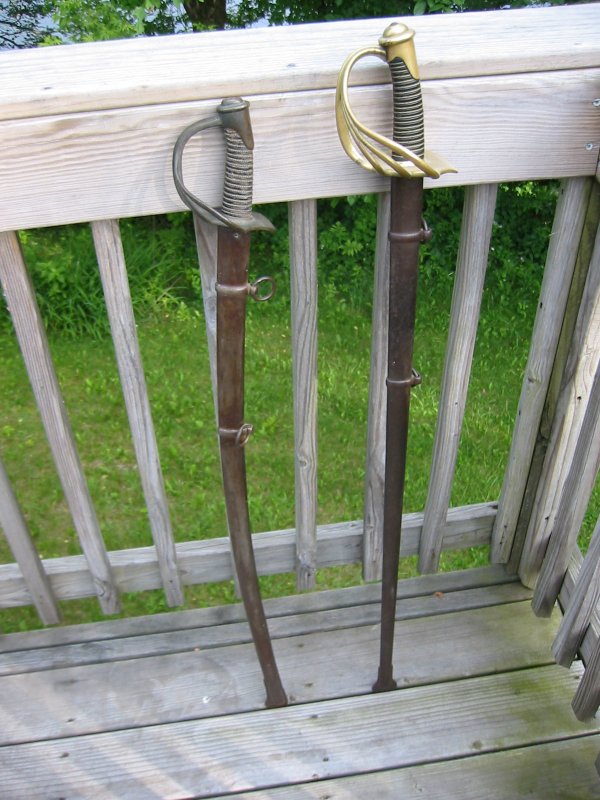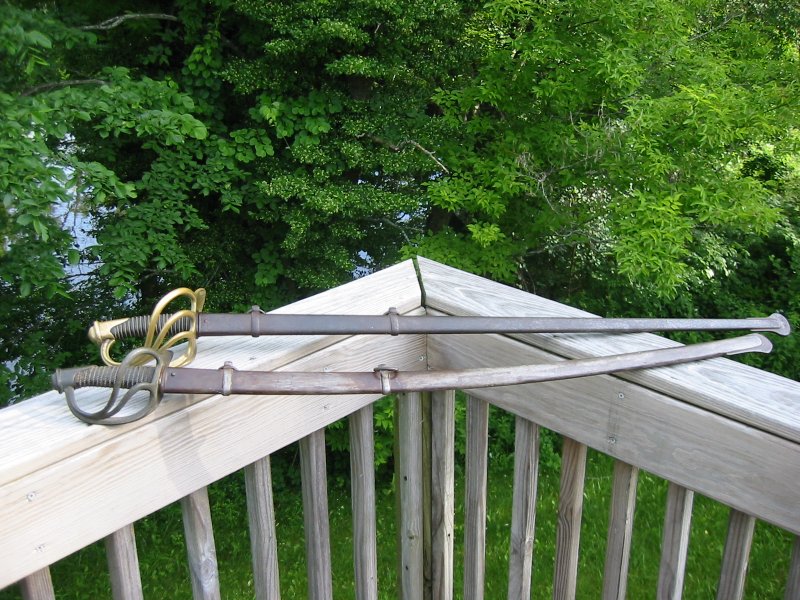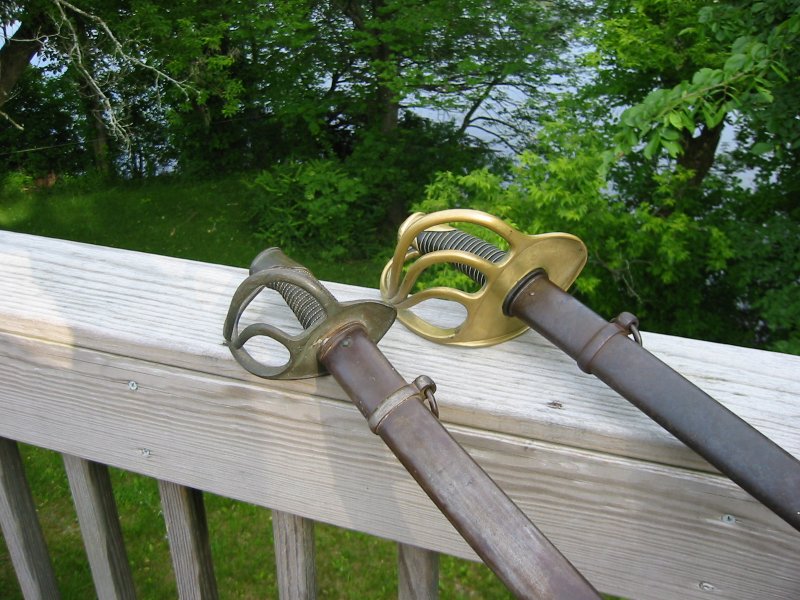| Author |
Message |
|
K. Larson
Location: Shanghai Joined: 04 Oct 2007
Posts: 16
|
 Posted: Sat 29 Aug, 2009 7:40 am Post subject: AN XI Cuirrassier Saber- a geometry question Posted: Sat 29 Aug, 2009 7:40 am Post subject: AN XI Cuirrassier Saber- a geometry question |
 |
|
Being on something of Napoleon kick at the moment, I've been looking up the equipment of the various cavalry units active during the campaigns of L'Empereur.
I was a little surprised at the AN XI/AN XIII cuirrassier saber used by the French. At 37.5", the thing is monstrous big- and the double fullers have me stumped. The fullers are nearly the entire width of the blade, with the back and edge emerging only in the last few millimeters. It seems that there's hardly an edge at all.
I understand the preferred use for this blade was the thrust. My question, to anyone who has handled one (or a good reproduction), could these blades take a workable cutting edge? Where they essentially Patton-type (thrust only) sabers? Would their length prevent an effective cut?
Obviously these aren't Type XII cutting blades- I'm interested in the degree of their specialization, mostly because I'd not seen blades with this type of geometry before. Clearly the design can't be too terrible, because Napoleon's Cuirrassiers managed to wreak fairly substantial carnage with them.
 Attachment: 33.99 KB Attachment: 33.99 KB
note the short edges. [ Download ]
|
|
  |
 |
Thom R.

|
 Posted: Sat 29 Aug, 2009 11:25 am Post subject: Posted: Sat 29 Aug, 2009 11:25 am Post subject: |
 |
|
I recently acquired an early 19th c Bavarian Guard sword with a dual fullered French Cuirassier blade dating to 1808/1809. It can certainly take a very sharp edge and would have been just as effective at cutting as any other backsword blade of that period. The central spine makes for a stiff blade that is also deadly for the thrust. It is actually quite light for its size and quite maneuverable.


|
|
  |
 |
Glen A Cleeton

|
 Posted: Sat 29 Aug, 2009 6:22 pm Post subject: Posted: Sat 29 Aug, 2009 6:22 pm Post subject: |
 |
|
The French cavalry fielded both curved and straight swords, with the cuirrassiers, carabiniers and dragons fielding these long straight swords. You might note that the first image attached is a shortened blade (while still quite large/long was shortened to later regulation. These cut down and refit blades continue with the 1854 hilts and right through the 19th century. The reign of the hussars and lancers would see them using their curved sabres.
My 1854 dragon is quite a handful, even compared to the light cavalry swords. I am attaching a comparasion shot of a generic German made light cavalry sword similar in shape and size to their mle1822 (although this would be called a heavy, or wristbreaker in American context). I'll also attach an image of some spadroons (infantry swords) with comparison of my 1854 and a reproduction Patton sword. The 1854 actually dwarfs the Patton in feel and overall size. Period Pattons feel lightweight in comparison and feels at least a half pound lighter than the Windlass offering.
My 1854 shows having been sharpened from the get go and while not table carving sharp would certainly open a wound from a blow to flesh. I doubt though it would be effective in slashing or hacking at even moderately thick uniform coats and tunics. The light sabres were the choice for that melee use and purpose.
While they might be best considered having been fielded as lance substitutes, lancers themselves were still a category of use right up to the 20th century. Jean Binck's old threads at SFI would break down lengths of the straight swords. My example is an inch or so short of the longer carabinier models but very much the same in appearance. My dragon is about the overall length of a good many earlier longswords and greatswords in the 48" range.
I frequent the dealer site Le Hussard, in lieu of some book learning I should be doing but it does offer an easy comparison chart of sorts.
Cheers
GC
 Attachment: 106.47 KB Attachment: 106.47 KB

1854 Dragon 1840 American sabre
 Attachment: 150.39 KB Attachment: 150.39 KB

 Attachment: 119.37 KB Attachment: 119.37 KB

|
|
  |
 |
|
Ian Knight
Location: England Joined: 09 Jun 2007
Posts: 2
|
 Posted: Fri 18 Sep, 2009 8:11 am Post subject: Posted: Fri 18 Sep, 2009 8:11 am Post subject: |
 |
|
I have two original French AN XIII sabres. One is dated 1810 and has the original hatchet pointed blade at 38" long, the other, dated 1813, has the modified spear pointed blade at 37.5". I have also handled many other examples, none of which had sharp blade edges. They were purely designed for thrusting and with much more fatal results then the British method of cutting. I believe that the French cuirassier's were taught to thrust and not to cut.
Ian
|
|
   |
 |
|
|

